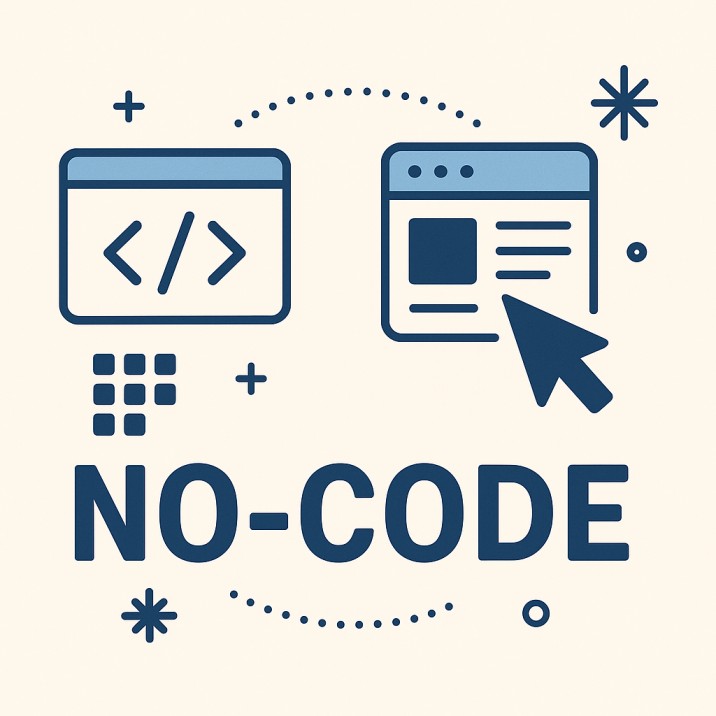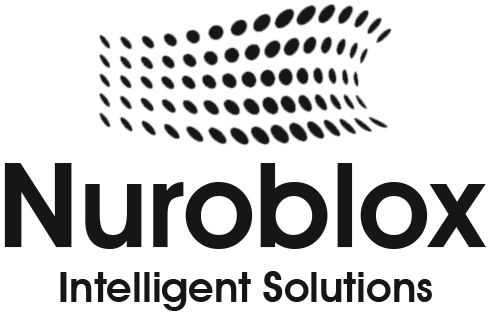10 Best No-Code Automation Tools for Every Use Case
Automation is no longer just for developers and IT teams. Thanks to no-code platforms, anyone, from marketers and HR managers to solopreneurs and small business owners, can now build powerful, automated workflows without writing a single line of code.
No-code automation tools have opened the doors to faster operations, reduced manual work, and scalable processes across departments. Whether you want to streamline lead management, automate email follow-ups, sync data between apps, or even trigger AI-based actions, there’s a no-code tool for that.
In this blog, we’ll explore the 10 best no-code automation tools that cover a wide range of use cases from business ops and marketing to customer service and beyond. These platforms are intuitive, efficient, and designed to help you get more done with less effort.
Criteria for Selecting the Best No-Code Tools

With so many no-code automation platforms available, choosing the right one can feel overwhelming. To help you narrow it down, here are the key criteria we used to evaluate and select the best no-code tools for various use cases:
1. Ease of Use- A true no-code tool should be intuitive for non-developers. Drag-and-drop interfaces, prebuilt templates, and a low learning curve are essential for quick onboarding and adoption.
2. Integration Capabilities- The best automation tools should seamlessly connect with your existing tech stack CRM, email, databases, spreadsheets, cloud storage, and more. Native integrations and API support make it easier to build powerful workflows.
3. Flexibility and Customization- Even without code, users should be able to customize triggers, actions, conditions, and rules to fit specific workflows. Flexibility is key to scaling and adapting automation across departments.
4. Scalability- Whether you’re a startup or a growing enterprise, the tool should support scaling. This includes handling more workflows, users, data volume, and complexity as your needs grow.
5. Pricing and Value- No-code tools should offer transparent pricing and strong value for money. We considered both free plans and premium features, especially how much you can automate before hitting a paywall.
6. Support and Community- Access to helpful documentation, active communities, tutorials, and customer support can make a huge difference in your success with a tool. We favored platforms with strong user ecosystems.
7. Security and Reliability- Automation often deals with sensitive data. We looked for tools that prioritize data privacy, uptime, secure connections, and user permissions.
The best no-code automation tools combine simplicity with power, helping users build complex workflows without technical roadblocks. These criteria ensured we picked tools that are not only beginner-friendly but also robust enough to grow with your needs.
10 Best No-Code Automation Tools in 2025
1. NuroBlox – Intelligent No-Code Automation + AI Agents for Enterprises- NuroBlox is a next-gen no-code automation platform built specifically for enterprises looking to combine business process automation with AI capabilities. It stands out by enabling autonomous AI agents to work within automated workflows, perfect for complex, decision-driven tasks.
Key Features:
- Visual no-code builder for workflows and logic
- Built-in AI agent orchestration
- Integrates with RPA tools, SaaS platforms, and internal systems
- Enterprise-grade security, governance, and data privacy controls
Best Use Cases:
- Automating customer support with AI agents and human handoff
- End-to-end business process automation (e.g., finance, HR, compliance)
- Dynamic document understanding and email processing
- Orchestrating AI-powered workflows across teams and tools
2. Zapier – Best for Automating Web Apps & Integrations- Zapier is one of the most widely used no-code automation tools, known for its simplicity and massive library of integrations. It connects over 6,000+ web apps, making it incredibly useful for automating routine tasks between tools like Gmail, Slack, HubSpot, Google Sheets, and thousands more.
Key Features:
- Easy-to-use trigger-action workflows (“Zaps”)
- Multi-step workflows and conditional logic (with premium plans)
- Built-in filters, delays, and formatter utilities
- Supports both personal productivity and business operations
Best Use Cases:
- Sending leads from a form to a CRM
- Automatically posting social media content
- Creating tasks in project management tools when emails arrive
- Syncing customer data between apps
3. Make – Visual Workflow Builder for Complex Logic- Make is a powerful no-code platform designed for users who want more visual control and logic depth in their automation workflows. Its drag-and-drop interface lets you map out complex, multi-step scenarios between apps with branching logic, loops, and real-time testing.
Key Features:
- Visual scenario builder with real-time data previews
- Advanced conditions, iterations, and data manipulation
- Large library of supported apps and APIs
- Custom webhooks and HTTP modules for more technical use
Best Use Cases:
- Multi-step data processing across systems
- Complex marketing automation flows
- Real-time order updates and notifications
- Inventory management and customer syncs
4. Microsoft Power Automate – Best for Enterprise MS Ecosystem Integration- Microsoft Power Automate (formerly Microsoft Flow) is a robust automation platform designed to work seamlessly within the Microsoft ecosystem. It enables users to automate workflows across Microsoft 365 apps like Outlook, Teams, SharePoint, Excel, and Dynamics 365, along with hundreds of third-party connectors.
Key Features:
- Deep integration with Microsoft apps and Azure services
- Prebuilt templates for quick workflow creation
- Advanced capabilities like RPA (desktop flows), AI Builder, and approvals
- Secure, scalable, and enterprise-ready
Best Use Cases:
- Auto-routing emails or files in SharePoint
- Approvals and notifications in Teams
- Syncing data between Excel, Dynamics 365, and other tools
- Enterprise document processing and task automation
5. Airtable Automations – No-Code Database Meets Workflow Automation- Airtable combines the simplicity of a spreadsheet with the power of a relational database and its built-in automation features allow users to trigger actions directly from table events. Great for teams managing projects, content, inventory, or operations in a structured yet flexible format.
Key Features:
- Trigger-based automations built into Airtable bases
- Integration with Slack, Gmail, Teams, and other tools
- Custom scripting options for advanced users
- Supports email alerts, record updates, webhooks, and more
Best Use Cases:
- Auto-updating project statuses based on deadlines
- Sending emails when new entries are added to a base
- Managing editorial calendars or campaign workflows
- Inventory restocking notifications
6. Tallyfy – Best for Process Automation and Approval Workflows- Tallyfy is a process automation tool designed to manage repetitive workflows, human approvals, and SOPs (Standard Operating Procedures) with no-code simplicity. It’s ideal for businesses that rely on consistency and transparency across teams.
Key Features:
- Visual workflow builder for tasks, decisions, and approvals
- Custom forms, dynamic logic, and process tracking
- Real-time status updates and deadline management
- Built-in audit trails and compliance-friendly reporting
Best Use Cases:
- Employee onboarding workflows
- Client onboarding and service delivery
- Purchase order and contract approval processes
- SOP-driven team collaboration
7. Kissflow – No-Code Platform for Business Process Management- Kissflow is a no-code platform tailored for automating business processes, managing projects, and building custom internal applications. It’s ideal for teams looking to digitize forms, approvals, and workflows, especially in HR, finance, and operations.
Key Features:
- Drag-and-drop process designer
- Workflow automation with conditional logic
- Built-in app builder and process tracking
- Role-based access control and audit trails
Best Use Cases:
- Leave requests, travel approvals, and expense claims
- Vendor onboarding and procurement workflows
- HR and finance process digitization
- Custom internal apps for non-technical teams
8. Tray.io – Low-Code/No-Code Hybrid with Powerful Data Handling- Tray.io is a professional-grade automation platform that bridges no-code ease with low-code flexibility. It’s built for teams that need deep integrations, large-scale data flows, and complex logic, while still offering a visual workflow editor.
Key Features:
- Advanced data mapping and transformation
- API integrations, webhooks, and custom scripts
- Supports complex branching logic and error handling
- Scalable for enterprise-grade workflows
Best Use Cases:
- Syncing customer data between CRM, ERP, and marketing platforms
- Automating multi-step SaaS operations
- Processing large datasets and triggering advanced workflows
- Deep integration between custom-built tools and third-party services
9. Bubble – Build Full No-Code Web Apps and Backend Logic- Bubble is a robust no-code platform for building web apps, complete with databases, logic, APIs, and front-end UI, all without traditional programming. It’s ideal for startups, MVP builders, or businesses looking to create internal tools.
Key Features:
- Drag-and-drop editor for designing interfaces
- Built-in database, workflows, and condition-based logic
- Plugin ecosystem and API connector
- Full control over user authentication and app behavior
Best Use Cases:
- Building SaaS products or marketplaces
- Creating internal tools or dashboards
- Prototyping apps before development handoff
- Developing customer portals or booking systems
10. n8n – Open-Source Workflow Automation with Extensibility- n8n is a powerful, open-source automation tool that gives users complete control over their workflows. It combines a visual interface with developer-friendly extensibility, making it ideal for those who want flexibility without full coding.
Key Features:
- Self-hosted or cloud deployment
- Supports JavaScript functions, custom nodes, and API calls
- Modular node-based builder for step-by-step automation
- Built-in versioning, retries, and advanced logic
Best Use Cases:
- Internal tool automation for dev teams
- Custom integration workflows and data transformations
- Privacy-focused organizations needing on-prem automation
- Combining no-code UI with light code flexibility
No-code automation tools are transforming how businesses operate by enabling anyone, regardless of technical skill, to build, automate, and scale workflows. Here are the core benefits that make them essential for modern teams:
Benefits of No-Code Automation Tools
Faster Implementation- No-code platforms drastically reduce development time. With drag-and-drop interfaces and prebuilt templates, users can launch workflows in hours or days instead of weeks or months.
- Speeds up process automation
- Ideal for prototyping or MVP development
- Enables agile experimentation
Reduced IT Dependency- Business teams no longer have to wait for developers to build solutions. No-code tools empower non-technical users to solve their own problems freeing up IT to focus on higher-value work.
- Empowers cross-functional teams
- Minimizes internal bottlenecks
- Increases organizational agility
Cost Efficiency- With lower development overhead, fewer third-party integrations, and reduced reliance on full-time engineers, no-code automation leads to significant cost savings, especially for small businesses and startups.
- Reduces hiring and outsourcing costs
- Eliminates the need for long dev cycles
- Offers budget-friendly subscription models
Increased Productivity- No-code automation eliminates repetitive tasks, freeing up time for more strategic work. It improves accuracy, reduces human error, and ensures smoother operations across teams.
- Automates data entry, notifications, and approvals
- Improves task turnaround times
- Streamlines collaboration across tools
Scalability Without Complexity- Many no-code platforms support advanced workflows, API integrations, and AI modules, allowing teams to scale solutions as business needs grow, without rewriting systems from scratch.
- Easy to modify or expand workflows
- Suitable for startups and enterprises alike
- Supports modular, iterative growth
No-code automation tools democratize innovation. They allow teams to move faster, operate smarter, and focus on what matters, without being held back by technical constraints. Whether you’re streamlining a single task or transforming an entire department, no-code is the future of agile, efficient work.
Conclusion
No-code automation tools have unlocked a new era of productivity, where anyone, regardless of technical expertise, can build and scale smart workflows. Whether you’re looking to connect apps, streamline business processes, or build full-fledged web applications, there’s a no-code solution to match your use case.
From well-known platforms like Zapier and Make to enterprise-ready solutions like NuroBlox and Kissflow, these tools prove that automation is no longer limited to developers. You can now automate faster, work smarter, and reduce operational overhead all without writing a single line of code.
The key is choosing the tool that aligns with your goals, technical comfort level, and workflow complexity. Start small, test early, and scale confidently.
No-code isn’t just a trend, it’s the foundation of modern, agile business.


